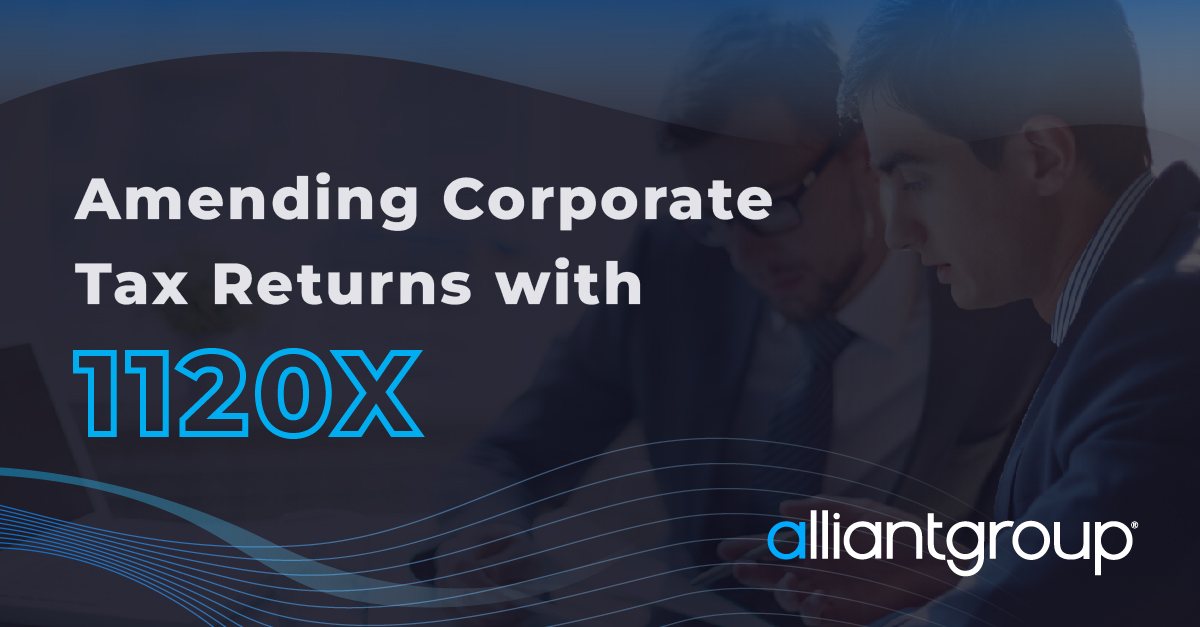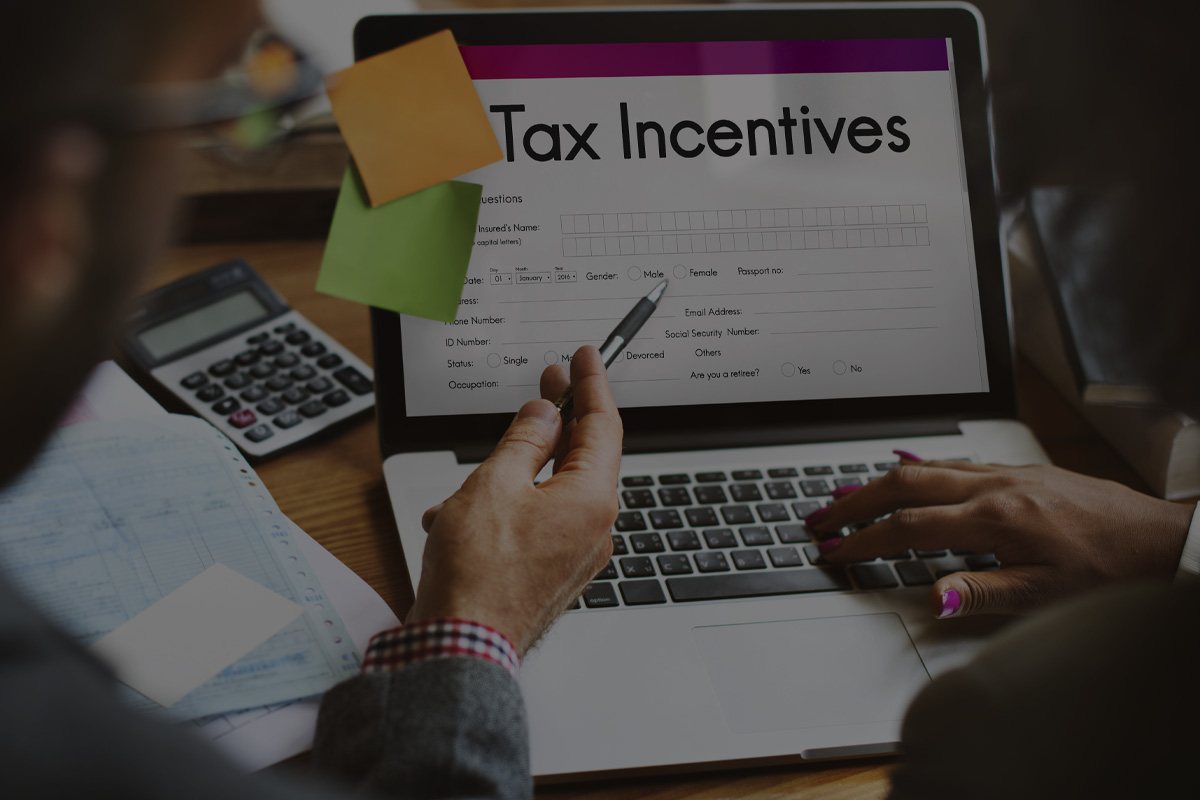[vc_row bg_type=”bg_color” bg_color_value=”#f5f5f5″ css=”.vc_custom_1618938311697{margin-top: 0px !important;margin-right: 0px !important;margin-bottom: 0px !important;margin-left: 0px !important;padding-right: 1em !important;padding-left: 1em !important;}”][vc_column][vc_column_text el_class=”article-info”]by Dean Zerbe, National Managing Director at alliantgroup and Former Senior Counsel to the U.S. Senate Finance Committee, and Rick Lazio, Senior Vice President at alliantgroup and Former U.S. Congressman
March 1, 2021 | published in bloombergtax.com[/vc_column_text][/vc_column][/vc_row][vc_row][vc_column][vc_column_text]The Consolidated Appropriations Act of 2021 passed by Congress and signed into law by President Trump on Dec. 27, 2020, did more than just fund our government. It also included several key tax provisions impacting already existing incentives.
One such provision immediately stands out as one that all tax practitioners should incorporate in their tax planning for 2021.
The bill made the Section 179D Energy Efficient Building Deduction permanent—an action that many have awaited since the incentive’s inception in 2005. This carefully crafted tax incentive has been of great value to taxpayers who have invested in making their buildings more energy-efficient over the past decade.
We’ve personally advocated on behalf of the effectiveness of this incentive in meeting environmental policy goals, reducing real estate operating expenses and redeploying dollars from wasteful costs to productive uses.
Making the incentive permanent will allow building owners—especially government building owners—to better plan and encourage energy efficient building design.
Thanks to Senators Ben Cardin (D-MD) and Mike Crapo (R-ID), as well as Congressman Earl Blumenauer (D-OR), it has become reality.
In addition to making the 179D tax benefit permanent, Congress also allowed for the $1.80 per square foot incentive to be increased annually for inflation. Further, as we have recommended to policymakers, Congress updated the provision by raising the bar for energy efficiency that must be met to qualify.[/vc_column_text][/vc_column][/vc_row][vc_row][vc_column][vc_custom_heading text=”‘Green’ incentives have been in the pipeline for over a decade” font_container=”tag:h2|text_align:left|color:%23000000″ google_fonts=”font_family:Montserrat%3Aregular%2C700|font_style:700%20bold%20regular%3A700%3Anormal”][vc_column_text]The 179D deduction was originally signed into law as a temporary provision within the bipartisan Energy Policy Act of 2005. Section 179D first allowed for a tax deduction for energy-efficient buildings placed into service between the end of 2005 and the beginning of 2008.
Upon expiration, Congress repeatedly extended the provision, allowing taxpayers to claim a deduction for up to $1.80 per square foot of energy-efficient commercial building property. Government entities were authorized to allocate their tax benefit to qualified designers (including the engineer of the energy-efficient system or the architect involved with the project).
Now, Congress has rightfully made the deduction a permanent fixture of our tax code. The key requirement for taxpayers is establishing that the project at issue reduced total energy costs by at least 50%.
Engineers, architects, and designers of government-owned buildings should take note now that the deduction will be available year after year. For those who design work for state, local, or federal entities, whether constructing, renovating, or retrofitting, Section 179D is definitely a financial resource they should keep in mind. However, there are other changes to this valuable incentive that practitioners need to be aware of today.[/vc_column_text][/vc_column][/vc_row][vc_row][vc_column][vc_custom_heading text=”How to claim the 179D deduction” font_container=”tag:h2|text_align:left|color:%23000000″ google_fonts=”font_family:Montserrat%3Aregular%2C700|font_style:700%20bold%20regular%3A700%3Anormal”][vc_column_text]With the passage of the Consolidated Appropriations Act, taxpayers wishing to take the deduction, which increases annually starting in 2021 to account for inflation, now face a new “energy efficiency criteria.”
Initially, cost savings from energy improvements were calculated based on a reference building under ASHRAE Standard 90.1-2007. With the new law, a more stringent version, ASHRAE Standard 90.1, is now in place. However, taxpayers can still use the standard in effect two years before the start date of their construction.
This incentive remains incredibly flexible and should be considered an accelerated cost recovery mechanism that many business owners would find useful given the current economic climate.
Factors such as the type of building at issue, the equipment deployed to achieve energy efficiency, and the nature of projects involved all need to be taken into account before calculating the maximum available deduction.
In brief, the deduction is readily available to taxpayers if they establish energy reductions above ASHRAE standards in systems such as interior lighting, HVAC, or hot water, as well as building envelopes. A building can also partially qualify if ASHRAE standards are met for improvements such as a newly integerated HVAC system. The statute simply requires that the building designer have a third-party certify the energy savings.
While the process may seem tedious at times, the financial return is worth the effort. This tax incentive has been of tremendous value for commercial building owners, as well as architects, engineers, and construction companies that design energy efficient buildings for federal, state, and local government. This includes designers of buildings for public schools and colleges.
Again, with Congress making the provision permanent, taxpayers can now plan for this deduction year after year, weaving it into their financial planning as a reliable source of capital. Alongside benefitting business and building owners, Section 179D will help push our overall infrastructure toward an era of energy efficiency.
Congress has repeatedly recognized the strength of tax incentives for American businesses, and the latest appropriations bill demonstrates their commitment to building out these financial resources in the long-term.
There is certainly still room for improvement, such as Congress converting 179D to a credit in order to deal with the deduction’s current basis issues. However, making this incentive a permanent fixture of the U.S. tax code is a promising start.[/vc_column_text][/vc_column][/vc_row][vc_section][vc_row][vc_column][vc_separator][/vc_column][/vc_row][vc_row css_animation=”fadeInRight”][vc_column][vc_custom_heading text=”About the Authors” use_theme_fonts=”yes” css=”.vc_custom_1621267078853{margin-bottom: 20px !important;}” el_class=”alt-h1″][/vc_column][vc_column width=”1/4″][vc_single_image image=”19004″][/vc_column][vc_column width=”3/4″][vc_column_text]Dean Zerbe is alliantgroup’s National Managing Director based in the firm’s Washington, D.C. office. Prior to joining alliantgroup, Zerbe was Senior Counsel and Tax Counsel to the U.S. Senate Committee on Finance. He worked closely with then-Chairman of the Finance Committee, Senator Charles Grassley, on tax legislation. During his tenure on the Finance Committee, Zerbe was intimately involved with nearly every major piece of tax legislation that was signed into law, including the 2001 and 2003 tax reconciliation bills, the JOBS bill in 2004 (corporate tax reform) and the Pension Protection Act.[/vc_column_text][/vc_column][/vc_row][vc_row css_animation=”fadeInRight”][vc_column width=”1/4″][vc_single_image image=”19038″][/vc_column][vc_column width=”3/4″][vc_column_text]Rick Lazio is a former U.S. Representative from New York serving in Congress from 1993-2001. While there, he became a strong advocate for small businesses by sponsoring the successful Small Business Tax Fairness Act. After Congress, Rick moved to the private sector working for JP Morgan Chase as a Managing Director and then Executive Vice President. Rick is committed to his continued interest and support of small to mid-sized businesses by brokering his insight and experience in the public and private sectors to provide strong incentives for job growth. This interest has extended into his civic and philanthropic work in New York with the Committee for Economic Development and the Association for a Better New York.[/vc_column_text][/vc_column][/vc_row][vc_row][vc_column][vc_separator][/vc_column][/vc_row][/vc_section][vc_row][vc_column][vc_row_inner][vc_column_inner]
Contact us to receive more information about the 179D – Energy Efficient Commercial Buildings Deduction.


